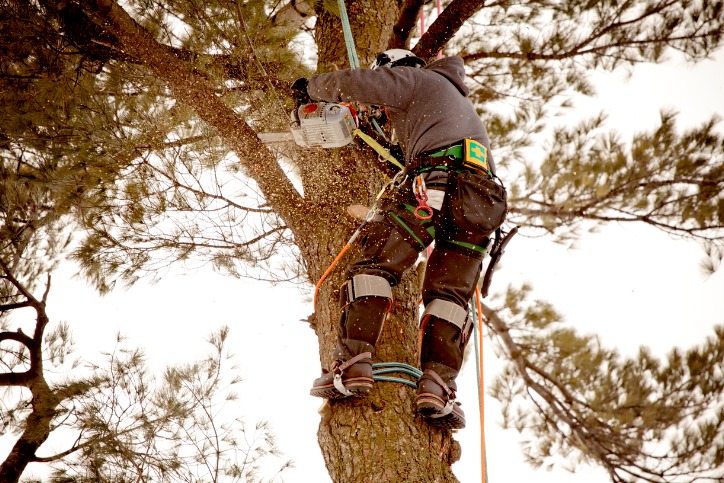TREE EDUCATION

Hurricane season in Florida spans from June through November. With such a sweeping window of worry, North Central Florida's homeowners and business owners may wonder how they can keep their properties safe while also protecting their trees and the surrounding landscape. Both hurricanes and tropical storms hit our area nearly every year, causing severe damage to our natural landscapes.
But with the right preparation steps, you can make your landscape more hurricane-resistant so your trees and property are less likely to experience damage during high-velocity winds and rain. Here, our certified arborists in Gainesville, FL, at SkyFrog Tree Service discuss how you can prepare your trees for hurricanes. Contact us today to schedule a tree assessment!
The first step in preparing your landscape for hurricanes and heavy storms is planning it mindfully, such as selecting more wind-resistant trees and planting them at an appropriate distance from all structures, utility lines, and outdoor features. We recommend visiting your local nursery and selecting trees with straight roots as opposed to circling roots. Also, look for trees with a single dominant trunk and branches sufficiently spaced out from each other. If existing trees on your property don't have these features, trim and prune them so they meet this criterion.
Trees with strong, sturdy trunks and a lower center of gravity often make it through storms unscathed, while those with a high center of gravity, heavy canopies, more than one trunk, and shallow roots are more likely to sustain damage and topple over during a hurricane. Any tree can be susceptible to becoming uprooted if it has poor growing conditions, damage to the root structure, disease, pests, and small root zones. Should a tree on your property topple over, contact SkyFrog Tree Service for emergency storm-damaged tree removal!
Old, large trees are wonders of the earth. But, if they are located too close to your residential or commercial structure, power lines, or other hurricane-susceptible areas, they can have the potential to become lethal when a storm hits. When a tree is planted too close to a structure, and its height is much greater than the structure, the roots may have grown under or into the foundation, which can result in a lack of tree stability. Additionally, high winds during hurricanes can cause the tree and its limbs and branches to sway violently, possibly causing costly damage to the structure.
If your tree is diseased or infested with pests, if its roots are damaged, or if it has not been cared for properly in the past, it could easily topple over in a hurricane. What's more, trees planted too close to power lines can become a serious and even lethal hazard during hurricanes. The best way to remedy these dangerous tree-related problems is to consult a tree care specialist, such as those with SkyFrog Tree Service, for a professional evaluation. Our certified arborists will evaluate the trees on your property and make recommendations about the best ways to preserve them and surrounding structures from hurricane damage.
Correct pruning is by far the most important aspect of preparing your trees for hurricanes. Professional tree pruning can help new trees learn how to develop hearty, well-spaced frameworks of branches that thrive along a singular, dominant trunk. This form should be maintained as far up the tree as possible, reducing the span of stems and branches that compete with the dominant ones. For mature trees, more than 15 feet in height, hire a certified arborist to prune and trim them as necessary in preparation for hurricane season.
Our arborists will remove all dead growth that could cause damage and injury to cars, homes, businesses, people, and more. In order to ensure your trees remain in tip-top shape year-round, we recommend scheduling tree assessments regularly, before each hurricane season starts or whenever you have concerns about a tree on your property.